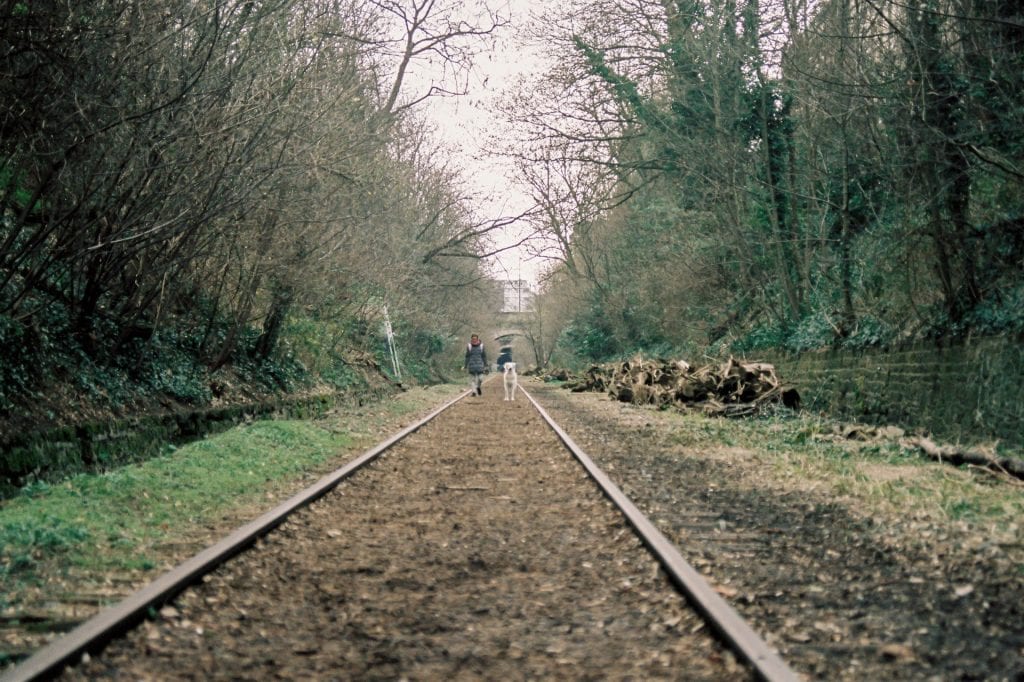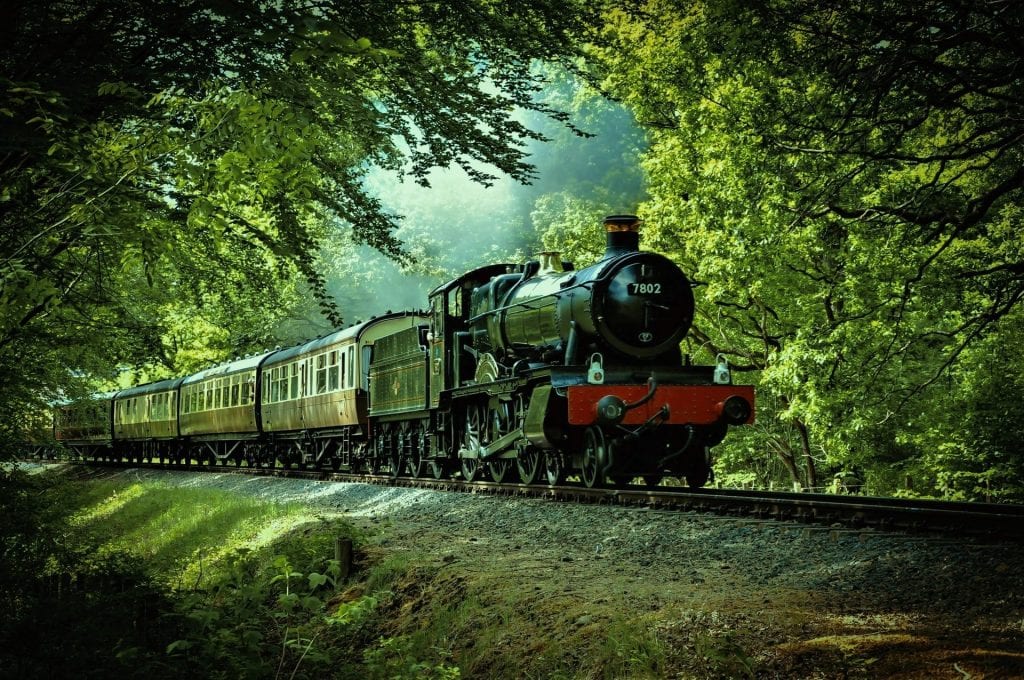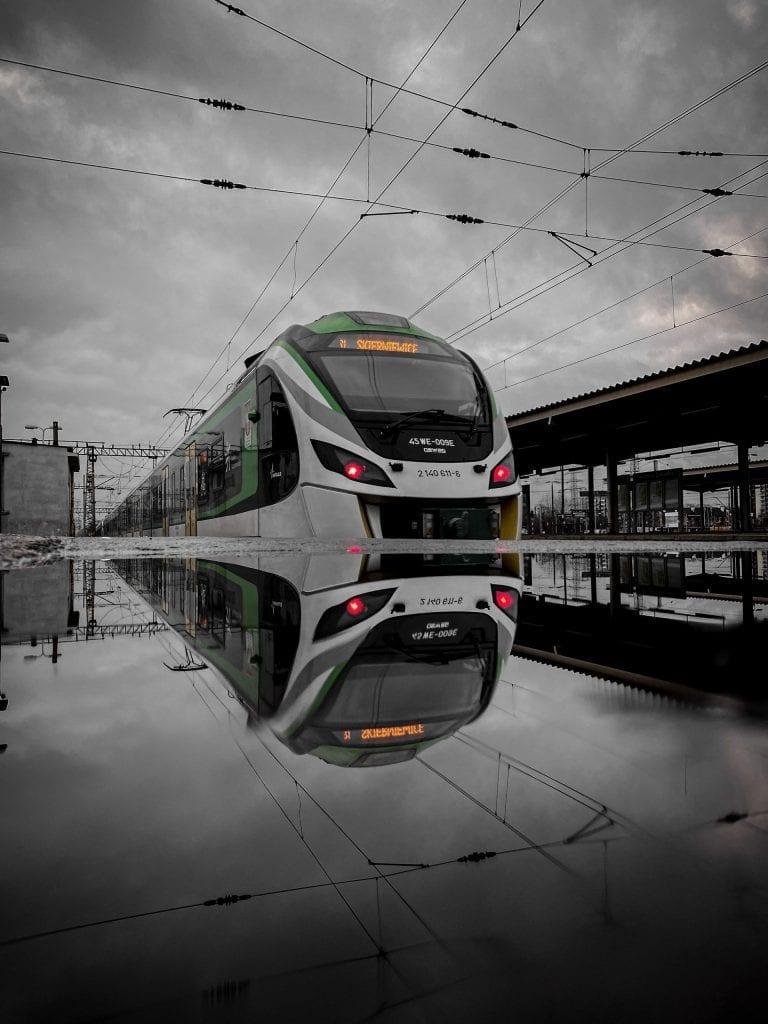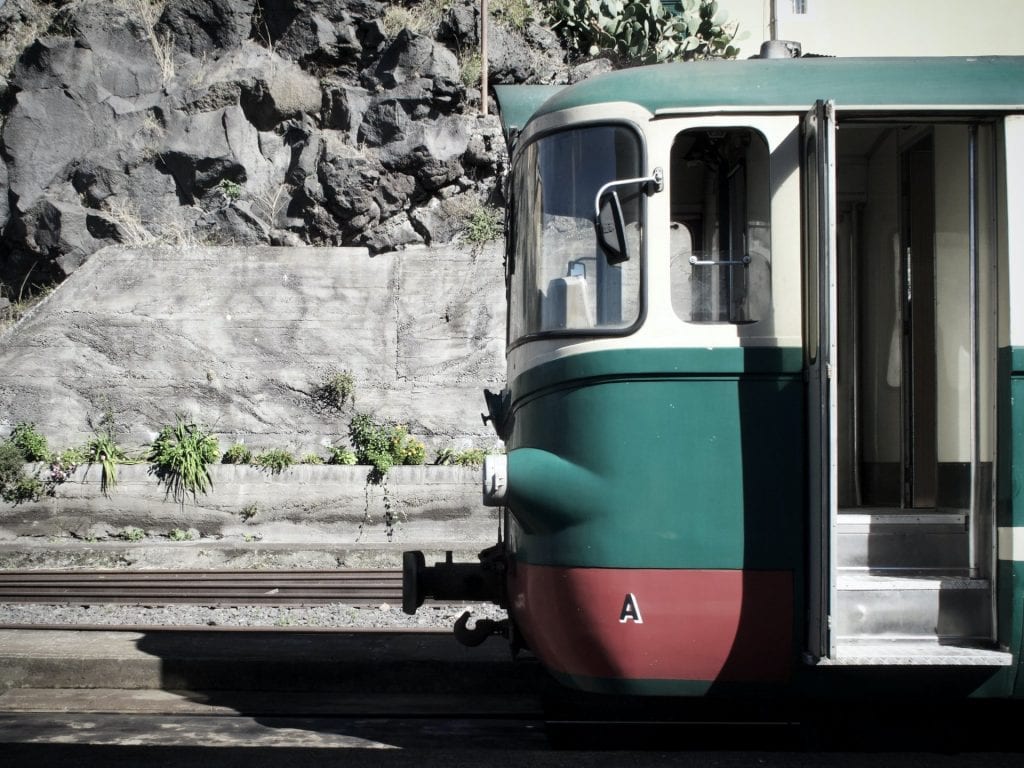Green Train Travel: Taking the time to explore the options of this sustainable alternative could be well worth your while, will help you reduce your own contribution to carbon emissions, and might very well lead to some unexpected delights. Just make sure that, if you choose to travel by train during the current pandemic, you are taking the necessary steps to stay safe, and consider the added benefit of being able bring a Dutch oven for camping.
By Susanne van Gendt
Environmental hopes from green train travel
While it had long been possible to travel by train from North American cities like Vancouver and Calgary to mountain village hubs like those of Banff and Jasper National Park, many European countries have also seen an increase in train travel over the last few years. Dutch rail operator NS saw its third year of increasing international train travel in a row (13% in 2019, 10% in 2018, and 6,4% in 2017), Germany released its biggest railway modernization program in Germany’s history (86 billion euros) just this year. Swiss Federal Railways (SBB) also stated international rail services have grown significantly during the first half of 2019.
Due to the PIA project (Pricing and International Offers) and the reintroduction of night trains across Europe (by Austria’s ÖBB Nightjet, while investing in new trains), it is now possible to cross the European continent with one single booking, while conveniently traveling overnight on some routes. These developments make it more and more easy to travel from Brussels to Vienna, or from Copenhagen to Paris or even London to Barcelona by train. Is traveling by train finally replacing the plane?
Enter COVID-19… in the midst of our battle towards a more sustainable society, the Coronavirus changed everything. Although COVID-19 made lots of victims and we would never wish for a pandemic to break out, there may be one upside to this eerie new reality: it may forever change the way we think about travel. Perhaps the outbreak might even cause us to go back in time: travel locally and explore our own backyards. Luckily, there is one way of travel that we still can rely on for our local journey: the good old train.

A short history of train travel in Europe
The oldest sign of something similar to a railway is known to have been built in Ancient Corinth in the 6th century BC. The Diolkos is a stone trackway across the isthmus of Corinth, that was used for transporting ships and cargo between the Saronic and Corinthian gulfs. The wagons that traveled on the Diolkos moved along some sort of carved grooves in the stone road and from the way the track was laid out, traffic probably moved in one direction at a time. It is no surprise that the first trackway system was introduced in Corinth, as Corinth was one of the largest and most important city-states in ancient Greece.
According to various sources, the Reisszug funicular railway at the Hohensalzburg Fortress in Austria might be the oldest operational railway. The original line, that was built in 1496 was operated with sleighs. In 1504 the system received its first renovation and from then on used wooden rails and a hemp haulage rope and was operated through a treadwheel by human or animal power. However, the current line is powered by an engine and in 1951 the rails were exchanged and went from narrow-gauge to normal railway.
The old railway system needs frequent servicing and was updated again in 2004. The Reisszug is not accessible to the public since it departs from the Nonnberg nunnery, but it is visible from beyond the Nonnberg area. The railway used to transport cargo and people and is still an important route for the restaurants of the fortress.
In the 1550s, wagonways with wooden rails and horse-drawn traffic are known to have been used for transportation to and from mines in Europe. In the 16th century there are many references to the usage of wagonways in Central Europe, for instance for transportation to or from mines, quarries, waterways or ports. The wagonways were the wooden tracks that the carts, that also had wooden wheels ran on.
Advances in technology made further development of the trackway system possible. As wrought iron and cast iron became popular materials used for building and infrastructure, the rail system got upgraded by nailing protective iron strips to the rails. In 1767 the first full-iron rails were introduced. By the middle of the eighteenth century, stationary steam engines were generally available in the mining industries. The steam engines were used in steep uphill sections of the wagonways.
The development of the first steam locomotives took place in the United Kingdom, in the early 19th century. Nigel Gresley, Chief Mechanical Engineer of the London and North Eastern Railway (LNER), developed some of the most famous locomotives, including the LNER Class A4, 4468 Mallard. With a maximum speed of 126 mph, the locomotive still holds the record for being the fastest steam locomotive in the world. Another important change to the railway system was introduced in the early 1900s, with steam locomotives being gradually replaced by electric and diesel locomotives. In the late 1930s railways were fully converted to electric and diesel power and most steam locomotives were retired by the 1980s.

Recent developments in European train travel
Around the same time the steam locomotives retired, the first high-speed rail lines were built in Europe (1980s and 1990s). The TGV (which stands for Train Grande Vitesse) was the first high-speed train that ran a service in Europe. The train was designed and manufactured by Alstom and originally ran in France. At the moment, it runs all over France and beyond, with destinations in Switzerland, Italy, Spain, Belgium, Luxembourg, and Germany.
Besides the TGV, a variety of high-speed trains is active in Europe. For instance, the German high-speed train ICE connects Germany to Denmark, France, Switzerland, The Netherlands and Belgium. Fellow player Eurostar connects the United Kingdom to The Netherlands, Belgium, and France. And there are many more players in the field.
That the field is crowded shouldn’t come as a surprise, as the development of a Trans-European high-speed rail network (called TEN-R) is a stated goal of the European Union, defined by the Council Directive 96/48/EC on 23 July 1996. Almost six years later, Commission Decision 2002/735/EC (30 May 2002) was added in relation to this directive, in order to define the technical specifications for the interoperability of the system. Since 2000, the EU has invested over 23.7 billion EUR into high-speed rail infrastructure.
According to a 2018 report, 9 selected European countries held nearly 9.000 kilometers of high-speed rail in total. High-speed rail is defined as lines or sections of lines on which trains can run 250 kilometers per hour or faster at some point during the journey. The rail system includes advanced infrastructures as tunnels or bridges.
A few breathtaking examples: the Swiss Landwasser Viaduct, which consists of six limestone arches resting on five high pillars, and the Scottish Forth railway bridge, a steel cantilever construction just west of Edinburgh, that is a symbol to Scotland. Switzerland plays a large role in advanced rail infrastructure, as the longest and deepest rail tunnel in the world (Gotthard Base tunnel, 57 km long) is also Swiss made.
However, defined goals and large investments are by no means a guarantee to success. The most important challenge of the European high-speed rail system is uniformity. With a lot of players in the field, it can be extremely challenging to plan an international journey with different high-speed rail operators in different countries. Before uniformity can be reached, some technical and administrative barriers need to be lifted, according to a 2018 report by the European Court of Auditors.

Increasing possibilities of routes and journeys
The lack of uniformity in the variety of European rail services does not mean that one is not able to plan international train journeys. All you need is persistence and creative thinking. This way, with the help of some handy websites, planning your next trip can be a lot of fun. It can even open up many itineraries you wouldn’t have thought were possible to undertake by train.
Flash forward to January 2020, when a new Interrail pass was introduced. The four-day Interrail pass is valid for any four days within a one-month period. This provides the opportunity to break down each leg of the journey or plan a quite flexible and relaxed round-trip. At last, international train travel may come within reach for those travellng on a budget, as prices for the four-day Interrail pass start from EUR 185, – in second class for 12-27-year-olds and EUR 246, – for adults (28+).
Interrail Global Passes are a great solution for any international train traveler in Europe, as the Global Pass allows you to travel to 30+ countries within Europe. From Poland to Portugal, Slovenia to Sweden or Finland to France: with over 40.000 destinations within Europe, the possibilities are endless.
Flash forward three months, and the Coronavirus limited almost all of our possibilities to travel, also by train. With famous travel destinations as Spain and Italy closing their borders to foreign visitors, most international train services have been highly restricted or even temporarily canceled. However, leading up to summer, the COVID-19 outbreak seems to be more and more in control, with countries opening up again for tourism in the high-season months. Although the borders of the EU will not yet open for non-EU visitors, EU-residents can slowly start to plan their summer vacation in another country in Europe.
That is if COVID-19 will keep quiet… Because anticipation comes close to exhilaration – at least in terms of holiday planning – we present some of the most fascinating European train journeys. To actually start planning your trip or merely to dream of and to keep in mind.
Fascinating European train journeys (single service)
Glacier Express
The Swiss Glacier Express is the slowest express train in the world. The train travels over 291 km of tracks and takes you from St Moritz in the Eastern Swiss Alps to Zermatt in the Western Swiss Alps. The panoramic journey passes through 91 tunnels and crosses 291 bridges and the 2033 m high Oberalp Pass. The trains are outfitted with panoramic windows and a partly panoramic roof so you will be able to see the tops of the mountains and the beautiful winter wonderland that you are traveling through. The journey takes between 7,5 and 8 hours in total. Read more about this journey on the Interrail website >

Caledonian Sleeper
The Caledonian Sleeper offers two different routes: the Highlander and the Lowlander route. The Highlander route runs between London Euston and Fort William, Inverness, and Aberdeen. The Lowlander route runs between London Euston and Glasgow Central or Edinburgh Waverley. The train service connects Central London in a budget-friendly and sustainable way to the various parts of Scotland.
Besides that, the sleeper trains are quite comfortable; some rooms are even equipped with double beds and showers. The sleeper service runs every weeknight except Saturday night. The London to Edinburgh route takes a mere 7,5 hours overnight, while the London to Fort William journey takes about 13,5 hours. The Highland route, in particular, provides stunning views over the Scottish Highlands. Popular train blog The Man in Seat 61 has a lot of helpful information about this service >
Inlandsbanan
Another scenic route is the Inlandsbanan: a 1,288-kilometer-long Swedish railway line between Kristinehamn in Värmland Province and Gällivare in the province of Lapland. Gällivare is a small Arctic town 100 km above the Arctic Circle that is frequently visited by tourists because of the scenery. UNESCO World Heritage Site Laponia breathes pure wilderness. Therefore, the train service only runs during the high season from mid-June until the end of August. The Interrail website provides more info on this journey >
More interesting European train journeys (multiple services/transits)
London to Lisbon by train
With high-speed railway all over Europe, it’s become increasingly easy to travel across Europe by train. If you would, for instance, travel from London, United Kingdom to Lisbon, Portugal, you would need only three different trains and 24 hours to arrive at your destination. First, you would need to take a Eurostar from London to Paris and transfer in Paris to take a TGV to French border village Hendaye. From Hendaye, you will take an overnight Sud Express train that will take you all the way to Lisbon. Again, The Main in Seat 61 has a lot of useful information on this route.

Hanover to Barcelona by train
If you were to travel from Hanover in Germany to Barcelona in Spain, you would need only three trains as well. First, you’ll travel from Hanover to Frankfurt on Deutsche Bahn’s ICE, to transfer to an ICE or TGV to Paris. From Paris, you’ll be able to travel directly to Barcelona on a TGV. This journey only takes about 19 hours. You can plan this journey using the Interrail website.
Paris to Budapest by train
To get from Paris, France to Budapest, Hungary, you would need to take only two trains. First, you’ll take a TGV from Paris to Munich. From there, you’ll transfer to a EuroNight sleeper train. The journey only takes about 18 hours from Paris. If you were to travel from London to Budapest, you would add a Eurostar from London to Paris as the first leg of the journey. The complete route would take you less than 24 hours. Read more about the possible routes and journeys on The Man in Seat 61 >
Get creative!
But there’s so much more to explore. Just get creative and start imagining the possibilities when combining different legs or journeys. Think about combining the Amsterdam to London route on Eurostar with a Caledonian Sleeper to the Scottish Highlands, or travel from Paris to Budapest and from there, board a direct train to Bucharest, Romania. The above itineraries just show the potential routes from one city to another. From there you will most likely be able to travel to a variety of regions within the country, by means of regional trains. This will allow you to really explore the country’s nature and culture, and not just the cityscape.
Under-tourism
Those regional trains that will take you across almost any European country, highlight another important point of green travel: under-tourism. Under-tourism goes against over-tourism, which is a serious problem in many European capitals as Amsterdam, London and Barcelona. Under-tourism means visiting less-frequented destinations, and striving for a deeper experience of the destinations’ culture instead of the common hit-and-run tourist principle. National Geographic provides a few suggestions for sustainable destinations in this article. However, with more and more people striving towards under-tourism, suggestions like those need to be updated frequently, to avoid under-tourism destinations becoming the subject of over-tourism in the end.
So how does under-tourism work? It’s actually pretty simple: look into destinations that are off the beaten track and match your personal interests. If you’re a hiking fanatic, consider trails in the lesser-known Balkan region, or visit the Alpine Pearls: a network of 21 environmentally friendly car-free villages in the German, Austrian, Italian, Slovenian, and Swiss Alps.
Lovers of sea and waves could opt to travel up north instead of heading south: Norway, Denmark, and Ireland are home to some of the better lesser-known European surf spots. The list of possibilities is close to endless. Use your imagination to tailor trips to your individual needs instead of following the crowd. In case you really want to contribute to the local society, check out destinations where tourism is needed in order to further develop the community.

New train journeys in 2020
In December 2020, new journeys with origin Amsterdam are being introduced by Austrian ÖBB Nightjet. The Austrian comfy sleeper trains will take you from Amsterdam to Münich (in Germany) or Innsbruck or Vienna (in Austria). The expanding of Austria’s main rail operator Österreichse BundesBahnen (short: ÖBB) makes Vienna the best-connected city by rail in Europe in 2020. No European city has so many connections to other European capitals; only Moscow comes close.
German Deutsche Bahn also plans to improve its passenger services in 2020. The six-hour journey from Berlin to Warsaw is being reduced by 30 mins from summer 2020, and a new Railjet service is being introduced from Berlin to Graz via Dresden, Prague, and Vienna from May 2020 on. New night services are being introduced in the Zürich to Berlin and Zürich to Hamburg routes on December 15.
The benefits of train travel over other travel methods
- The scenery. Because you’ll travel overland, traveling by train will most likely provide beautiful scenery along the way. Besides that, you’ll handily avoid the chance of getting stuck in traffic jams, as you would when traveling by car.
- The level of comfort. We’ll opt for comfy sleeper trains over cramped airplane seats any day. Some of the sleeper trains even provide rooms with double beds and showers. Breakfast, lunch, and dinner can sometimes be reserved in a special restaurant cart. What more can you wish for when traveling?
- It’s sustainable. Needless to say: traveling by train is far more sustainable than traveling by car or plane. BBC’s Science and Environment section provides a handy plane vs train comparison for traveling from London to Madrid in this article. The article also supplies links to other helpful websites. The Man in Seat 61 published a plane vs train CO2 emission comparison for a variety of destinations. You’ll find the overview here.
- Less luggage restrictions. Of course, there are limitations to the luggage you can take with you on the train, but it certainly won’t be as bothersome as luggage restrictions on airplanes. Many trains will allow you to take multiple backpacks, weekend bags or suitcases with you on the train. Given that they won’t weigh each piece of luggage, this gives you a bit more freedom in what to take with you on your trip. We do advise to travel light since that’s more sustainable and definitely more carefree.
- Getting around. Traveling by train doesn’t mean you won’t have any form of transportation at your destination. Some of the European high-speed trains are equipped with designated areas for bicycles, for which you can reserve a space. Other trains allow you to take a folded or partially dismantled bike without any reservation or fee on top. You’ll find a helpful overview here. This makes getting around upon arrival super easy (if you’re traveling light, that is) and won’t break the bank as much as taking public transport all over town.
- No stress. Yes, you do need to board your trains a bit in advance, but border control checks (which only happen occasionally between Schengen countries) consist of just handing in your passport for a quick check, instead of queuing in a long airport line. Besides that, most international trains are equipped with power sockets for smartphones and laptops, and some of them (for instance German ICE) even have Wi-Fi on board. If you want, you are actually able to enjoy slow travel and plan the different legs of your journey in a flexible way. Stay overnight in a transit city if you want, or use the sleeper trains for efficiency. With the near -endless possibilities of train travel, it’s really up to you to decide.

Helpful websites to plan your train journey
- Seat61: we’ve already mentioned this popular train blog in this post. And that’s by no means by accident: Mark Smith, the owner of the blog, has written down just about any inside information you might need to plan your trip. From how to buy train tickets in not-so-digitally-savvy-countries to the levels of comfort on various types of trains.
- Interrail: find out more about the different Interrail passes or discover recommended routes. The website also has a small section about traveling on a budget.
- Trainline: this website helps you plan your train and bus journeys across Europe. Trainline is an official distributor for a variety of (international) rail operators. Its comparison module helps you to choose the most competitive price.
- Carbon Footprint: this website holds information about anything related to our carbon footprint. From carbon calculators to CO2 reduction and carbon offsetting.
- The Travel Foundation: an international sustainable tourism charity that pursues forms of tourism that benefits local people. Their website has a lot of background information on sustainable tourism, for instance about local products and supply chains, about water, waste, and energy or about wildlife and the environment. Their motto: “If we do tourism right, destinations won’t survive, they’ll thrive.” And that statement fits our line of thinking exceptionally good.